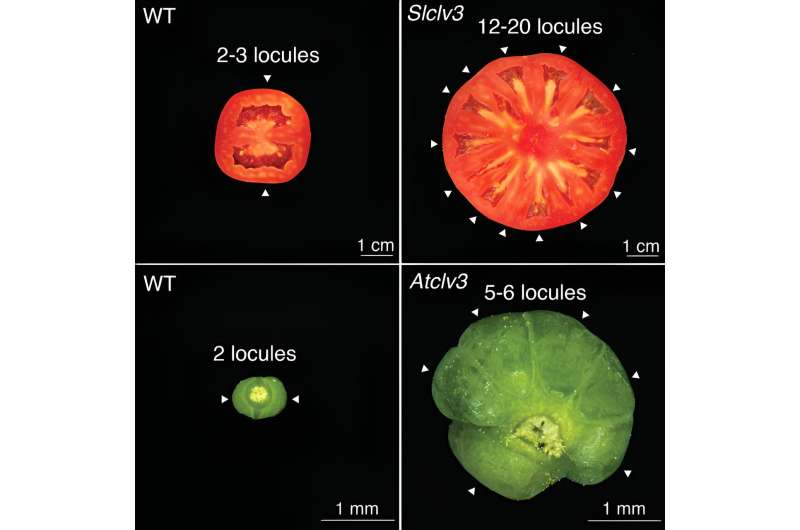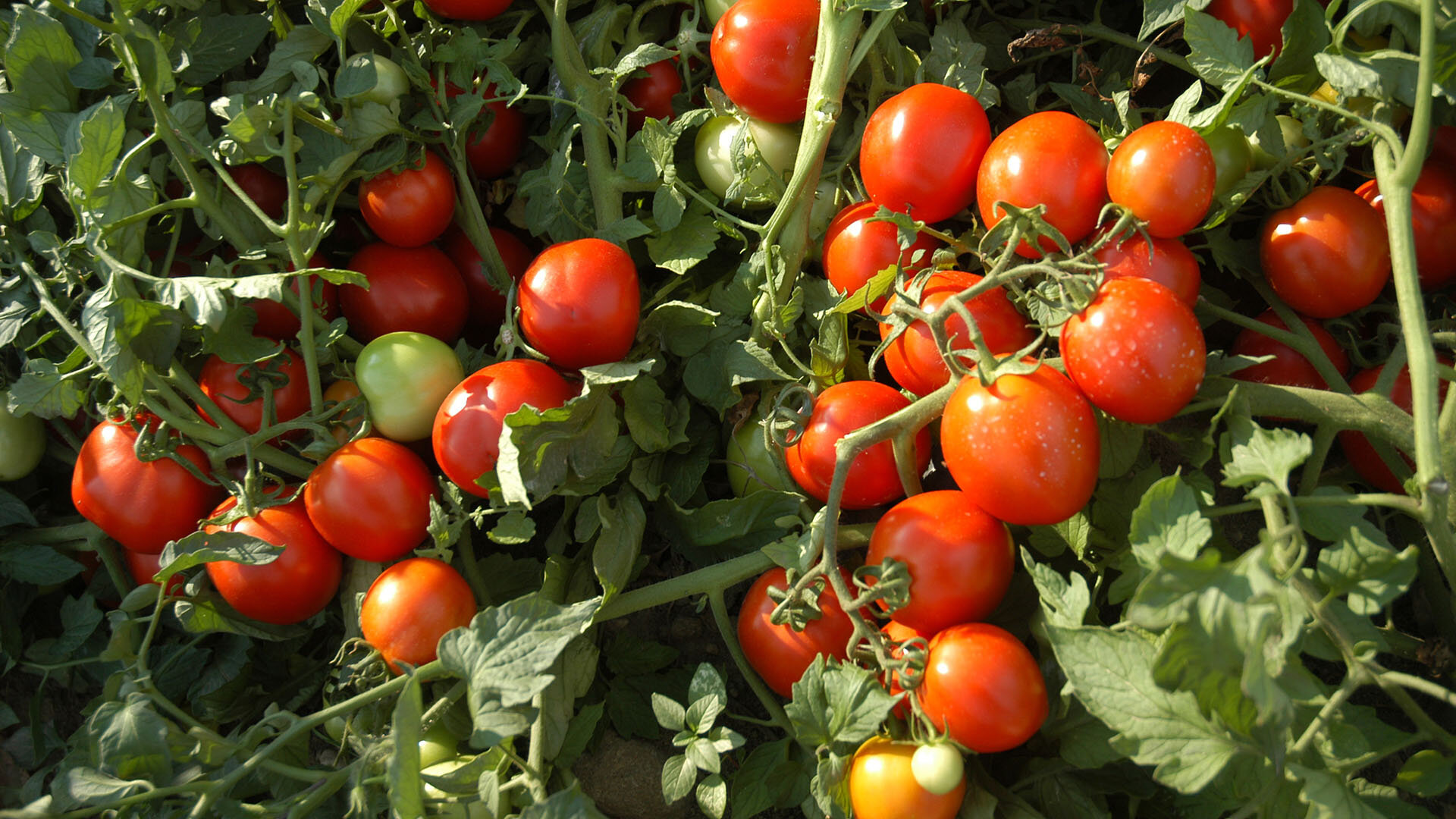A bushel of tomatoes at CSHL Uplands Farm. Credit: Uplands Farm/Cold Spring Harbor Laboratory
Plant genomics has come a long way since Cold Spring Harbor Laboratory (CSHL) helped sequence the first plant genome. But engineering the perfect crop is still, in many ways, a game of chance. Making the same DNA mutation in two different plants does not always give us the crop characteristics we want. The question is why not? CSHL plant biologists may have just discovered one reason.
CSHL professor and HHMI investigator Zachary Lipman and his team discovered that tomato and Arabidopsis thaliana plants can use very different regulatory systems to control the same exact genes. Incredibly, they linked this behavior to extreme genetic variations over 125 million years of evolution.
Scientists used genome editing to create more than 70 mutant strains of tomato and Arabidopsis thaliana plants. Each mutation destroyed a piece of regulatory DNA around a gene called CLV3. They then analyzed the effect each mutation had on the plant’s growth and development. When the DNA that controls CLV3 changed too much, the fruit’s growth exploded. He published his findings PLoS Genetics,
“CLV3 helps plants grow normally. If it wasn’t turned on at exactly the right time, the plants would look very different,” explains Danielle Siren, a recent graduate of the CSHL School of Biological Sciences who led the study. Not all fruit will be giant and ideal. You have to balance growth and yield. If a plant has large tomatoes but only two, is it equally beneficial to have a lower yield? There is no easy solution to this. When you try When you are doing, you are always sacrificing something to improve something.”

Mutations in the CLV3 gene can dramatically increase fruit size, as seen in tomato (top row) and Arabidopsis thaliana (bottom row). Credit: Lippman Lab/Cold Spring Harbor Laboratory
For tomatoes, engineering mutations at the beginning but not the end of the CLV3 gene dramatically affected fruit size. For Arabidopsis, the regions surrounding both parts of the gene need to be disrupted. This indicates that something happened in the last 125 million years that caused plants to evolve differently. What actually happened remains a mystery.
“You can’t go back to the common ancestor because they don’t exist anymore. So it’s hard to say what the original conditions were and how things got mixed up,” says Siren. “The simplest explanation is that there is a regulatory element that has been conserved in some capacity, and it has been changed in subtle ways. This is a bit unexpected.”
It is certain that genetic regulation is not uniform among plant species. Detecting these genetic differences could help make crop genome engineering more predictive. And this would be a huge win not only for science but also for farmers and plant breeders around the world.
more information:
PLoS Genetics (2024). DOI: 10.1371/journal.pgen.1011174
Provided by Cold Spring Harbor Laboratory
Citation: An evolutionary mystery spanning 125 million years (2024, March 4) Retrieved on 7 March 2024 from https://phys.org/news/2024-03-evolutionary-mystery-million-years.html
This document is subject to copyright. No part may be reproduced without written permission, except in any fair dealing for the purpose of private study or research. The content is provided for information purposes only.

